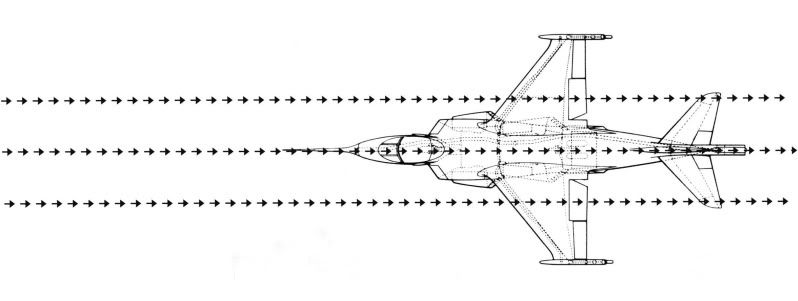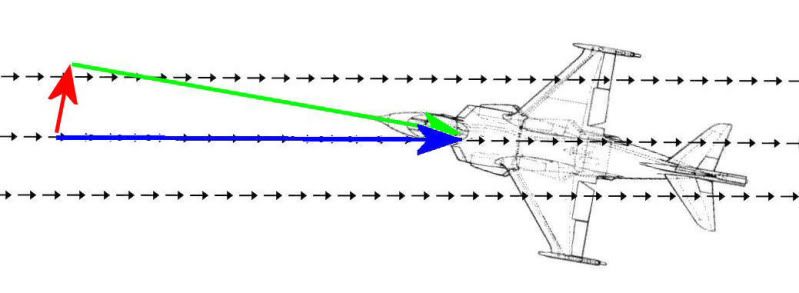A quote from page 80
The other problem stemmed from the intakes and meant that, if left to its own devices, a P1127 (or early Harriers) flying slower than about 100 kt wanted to go tail first. The pilot literally had to use his feet to keep the aircraft pointing into the airflow. This was directly analogous with the need for the pilot of a tail-dragger aeroplane to use his feet to stop it swinging and ground looping when landing, especially in a crosswind.
The reason for this was that the aerodynamic stabilising effects of the P1127 fin were no different from any other aircraft so faded away as one got slower. Unfortunately there was a destabilising force that increased as flying speed reduced and so defeated the residual efforts of the fin. This force was called intake momentum drag. It exists on all jet engine intakes and gets greater as rpm are increased. Thus whenever you were flying slowly and necessarily using jet lift not wing lift, up went your rpm and up went the intake momentum drag.
To understand why this destabilised the aircraft directionally we need to look at the airflow round the aircraft when viewed from above. In Fig 3 I have tried to indicate that everything is fine when the aircraft is pointing directly into the airflow.
Fig 3

However, what happens if the aircraft starts travelling slightly sideways through the air because of a cross wind or a deliberate move by the pilot is shown in Fig 4.
Fig 4

With the total airflow - represented by the blue arrow - now coming at an angle to the nose, we must think about its two components as shown. The green being that part which is straight on the nose and the red that part which is blowing directly across the nose.
The red arrow is of course the troublemaker because its effect is felt at the intake which is well ahead of the centre of gravity and so opposes the fin. Should the pilot allow the aircraft to swap ends and fly tail first you might think it would just be embarrassing for him because in his debrief he will be told to try harder on the rudder. Sadly he is unlikely to make the debrief because, at speeds greater than about 70 kt as the aircraft goes seriously sideways, the leading wing will generate much more lift than the other and the aircraft will roll out of control, thanks to what is termed ‘rolling moment due to sideslip’. Such asymmetric lift can easily swamp the aerodynamic and reaction controls.
Clearly some exotic technology was called for to help the pilot keep the aircraft pointing into the airflow. In fact all that was needed was a simple wind vane as seen on any church steeple. It is mounted in front of the pilot and always shows him where the airflow is coming from.
Later on Harriers were fitted with an artificial directional stability autostab (mid 70s) that helped keep the vane in the middle at mid transition speeds.
Re the Stencil seat this had an outstanding performance at low speeds because it used an explosive canopy spreading device which inflated the canopy quicker than the airflow could. The changeover speed between slow and highspeed modes was about 210 to 230 kts. The bad news was that if you got the low speed mode (with explosive spreading) at the top of the changeover band it might (might) break your neck. So either punch out above 250 kts or below 180 kts for a gentler ride. Not hard to organise as even gliding at 210 kts you could pull the nose up before ejecting.